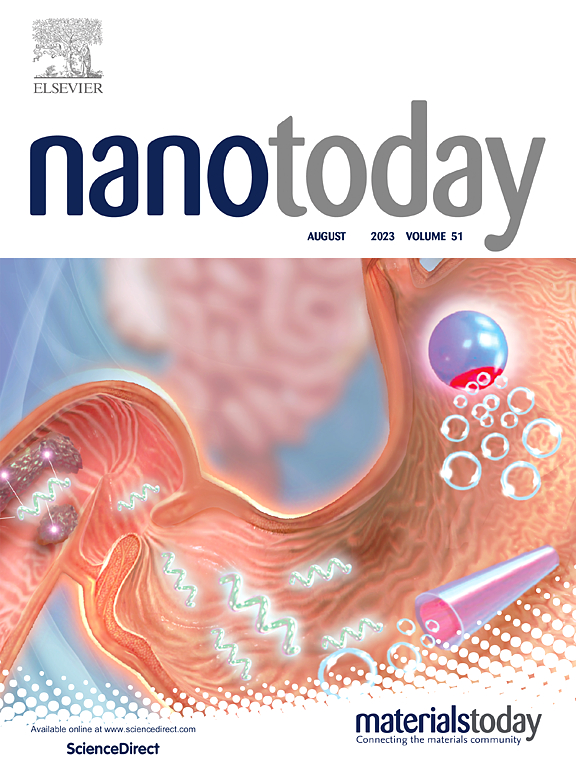Nano-imaging the inhibition of breast cancer cell migration by maduramicin via surface charge alteration using scanning ion conductance microscopy
IF 10.9
1区 材料科学
Q1 CHEMISTRY, MULTIDISCIPLINARY
引用次数: 0
Abstract
Cancer cells possess a negatively charged surface that significantly influences key biological processes, including motility and invasiveness. Understanding the cellular membrane at the nanoscale level, especially in deciphering tumor migration mechanisms, is crucial yet complex. In this study, we explored the impact of maduramicin (MAD), a polyether ionophore antibiotic, on the surface charge distribution in tumor cell membranes. Our findings demonstrated that modulating calcium channels and disrupting charge distributions, imaged by a current difference-based scanning ion conductance microscopy (ΔI-SICM) method, resulted in significant reductions in both cell invasiveness and viability. These results emphasize the cell membrane's considerable role at the nano-bio interface, highlighting the intricate relationship between biophysical properties and cellular behaviors. Our research suggests that targeting the charge distribution of cell membrane may offer a novel therapeutic strategy to mitigate cell migration and enhance treatment outcomes in cancer therapy.
利用扫描离子电导显微镜通过表面电荷改变观察马杜拉米霉素对乳腺癌细胞迁移的抑制作用
癌细胞具有带负电荷的表面,显著影响关键的生物过程,包括运动性和侵袭性。在纳米水平上理解细胞膜,特别是在解读肿瘤迁移机制方面,是至关重要的,但也是复杂的。在本研究中,我们探讨了聚醚离子载体抗生素maduramicin (MAD)对肿瘤细胞膜表面电荷分布的影响。我们的研究结果表明,通过基于电流差的扫描离子电导显微镜(ΔI-SICM)方法成像,调节钙通道和破坏电荷分布导致细胞侵袭性和活力显著降低。这些结果强调了细胞膜在纳米生物界面上的重要作用,突出了生物物理特性和细胞行为之间的复杂关系。我们的研究表明,靶向细胞膜的电荷分布可能提供一种新的治疗策略,以减轻细胞迁移和提高癌症治疗的效果。
本文章由计算机程序翻译,如有差异,请以英文原文为准。
求助全文
约1分钟内获得全文
求助全文
来源期刊

Nano Today
工程技术-材料科学:综合
CiteScore
21.50
自引率
3.40%
发文量
305
审稿时长
40 days
期刊介绍:
Nano Today is a journal dedicated to publishing influential and innovative work in the field of nanoscience and technology. It covers a wide range of subject areas including biomaterials, materials chemistry, materials science, chemistry, bioengineering, biochemistry, genetics and molecular biology, engineering, and nanotechnology. The journal considers articles that inform readers about the latest research, breakthroughs, and topical issues in these fields. It provides comprehensive coverage through a mixture of peer-reviewed articles, research news, and information on key developments. Nano Today is abstracted and indexed in Science Citation Index, Ei Compendex, Embase, Scopus, and INSPEC.
 求助内容:
求助内容: 应助结果提醒方式:
应助结果提醒方式:


